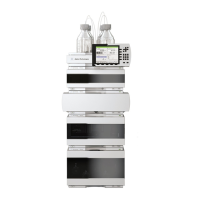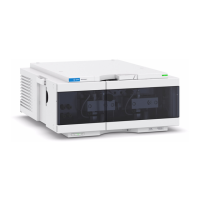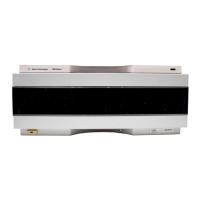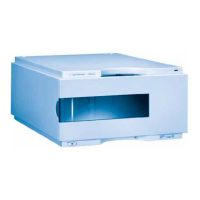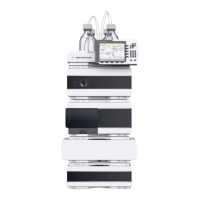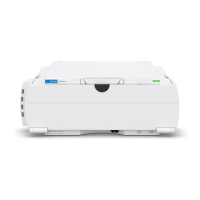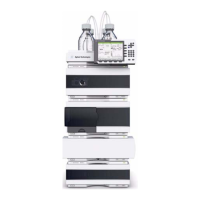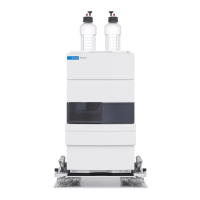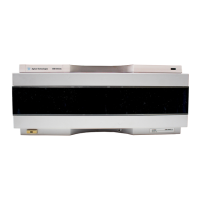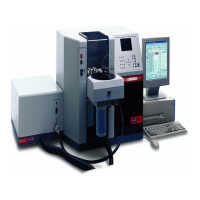54 1290 Infinity Quaternary Pump User Manual
4 Using the Pump
Algae Growth in HPLC Systems
Algae Growth in HPLC Systems
The presence of algae in HPLC systems can cause a variety of problems
that may be incorrectly diagnosed as instrument or application problems.
Algae grow in aqueous media, preferably in a pH range of 4- 8. Their
growth is accelerated by buffers, for example phosphate or acetate. Since
algae grow through photosynthesis, light will also stimulate their growth.
Even in distilled water small- sized algae grow after some time.
Instrumental Problems Associated With Algae
Algae deposit and grow everywhere within the HPLC system causing:
• Blocked solvent filters or deposits on inlet or outlet valves resulting in
unstable flow, composition or gradient problems or a complete failure of
the pump.
• Small pore high pressure solvent filters, usually placed before the
injector to plug resulting in high system pressure.
• PTFE frits blockage leading to increased system pressure.
• Column filters to plug giving high system pressure.
• Flow cell windows of detectors to become dirty resulting in higher noise
levels (since the detector is the last module in the flow path, this
problem is less common).
How to Prevent and-or Reduce the Algae Problem
• Always use freshly prepared solvents, especially use demineralized
water which was filtered through about 0.2 µm filters.
• Never leave mobile phase in the instrument for several days without
flow.
• Always discard old mobile phase.
• Use the amber solvent bottle (Solvent bottle, amber (9301- 1450))
supplied with the instrument for your aqueous mobile phase.
• If possible add a few mg/l sodium azide or a few percent organic
solvent to the aqueous mobile phase.
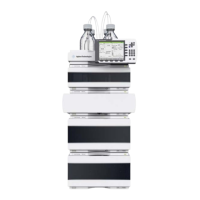
